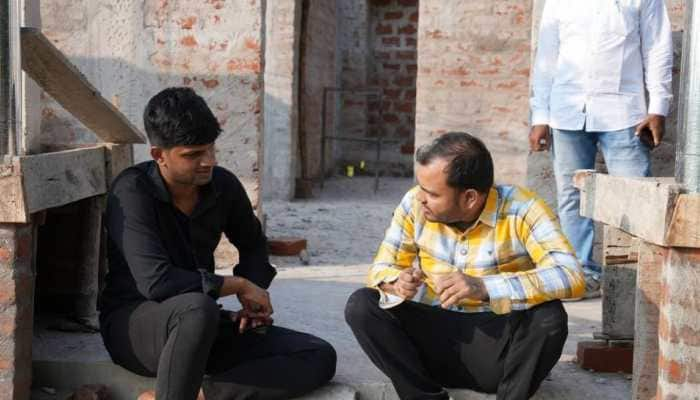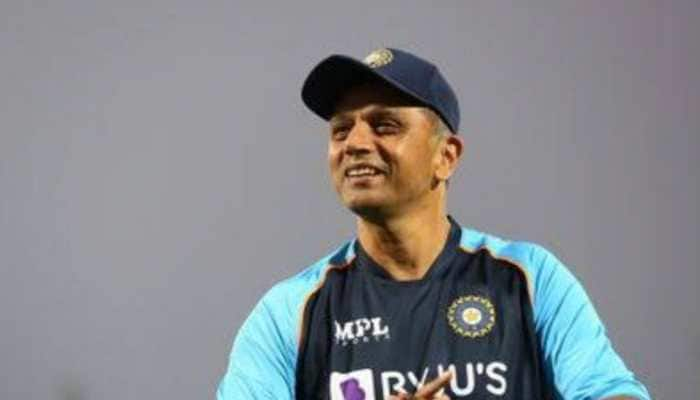Malaysian PM's India visit: A deeper meaning behind the MoUs
Trending Photos
)
Sharifah Munirah Alatas/South Asia Monitor/IANS
On March 30, Malaysian Prime Minister Najib Tun Razak arrived in Chennai for an official visit following an invitation from his Indian counterpart, Narendra Modi.
This was Razak`s third official visit as Prime Minister, and an important one at that, given the number of agreements that were signed. On a six-day visit, Razak reached New Delhi on March 31, and proceeded to Jaipur on April 2 following an invitation by Rajasthan Chief Minister Vasundhara Raje Scindia.
The Malaysian delegation`s six-day official visit to India focused on the close political and economic ties between the two nations. Razak had written exclusively in the Hindustan Times about the purpose of his visit and how the two nations have shared similar trade, economic and personal/cultural affinities over the decades.
But what is really behind the Malaysian Prime Minister`s official visit to India?
Razak`s clicking a selfie with Tamil super star actor Rajinikanth at the latter`s home in Chennai on March 31 indicates Malaysia`s conscious attempt to bring "the people" of both Malaysia and India to a certain level of understanding, that the two nations share close cultural ties, apart from the trade and economic ties that already exist.
It is also seen as a move to appease the Tamil community in Malaysia, i.e., to suggest that the friendly and familiar relationship between the Tamil communities in both India and Malaysia remains strong. For Modi, too, the appeasement of the Tamil community in south India is a positive political move in the direction of winning over more adverse political opinions. (The south here includes the states of Andhra Pradesh, Karnataka, Kerala, Tamil Nadu and Telangana and the Union territories of Puducherry and Lakshadweep).
Jaideep Mazumdar, Joint Secretary in charge of Malaysia-India diplomatic relations in the Indian foreign ministry, confirmed the following:
- That India and Malaysia discussed $5 billion worth of two-way investments during Razak`s five-day visit in a bid to boost economic linkages between Asia`s third-largest economy (India) and one of the fastest-growing economies in South East Asia (Malaysia).
- That India is keen on building stronger political, economic and strategic ties with Malaysia, seen as a moderate Muslim nation with a population of approximately 28 million.
- That Indian firms have moved to Malaysia in a big way, making it a base to do business with other ASEAN nations.
- That Malaysia has invested about $6 billion worth of projects in India and Indian investment in Malaysia amounts to about $2.5 billion.
In the defence and security arena, Indian pilots operating Sukhoi-30 frontline fighter aircraft were training Malaysian defence personnel on Sukhois in Malaysia between 2008 and 2010.
Mazumdar also said that India inducted the Russian-made Sukhois into its inventory in 1997 and has been steadily adding to its numbers in the Indian Air Force. The two countries (India and Malaysia) held their first military exercises in 2012 and their first naval exercises in 2016.
In general, the relationship encompasses a very wide canvas from economic and commercial to defence and security, besides the traditional people-to-people links.
India and Malaysia signed an MoU on Defence Cooperation in 1993 and a Malaysia-India Defence Cooperation Meeting (MIDCOM) was established under its framework. Several MIDCOM meetings and reciprocal visits of high-level defence personnel have been taking place since 1993.
Defence cooperation with Malaysia is in the interest of India from the point of view of both economic and strategic aspects. Besides a seller-buyer relationship with respect to military hardware, India and Malaysia also cooperate to secure the Malacca Straits through joint patrols and other activities. India and Malaysia have discussed the issue of compulsory pilotage of the Malacca Straits at the latest Shangri La security dialogue held in Singapore. India`s expertise in maritime security can be useful for protecting the narrow channel of the Malacca Straits from emerging non-traditional security threats in Southeast Asia.
Compared to Malaysia`s relations with India during the administration of Prime Minister Mahathir Mohamed, Razak sees a new and improved relationship, a new "high" in the areas of infrastructure development, student exchange, and other areas.
The two nations agreed to revitalise the Comprehensive Economic Cooperation Agreement (CECA), as well as to be more proactive in the Regional Comprehensive Economic Partnership (RCEP).
Overall, the two leaders unanimously declared that relations between India and Malaysia are at an all-time high.
However, like most official dignitary-level visits and meetings, what is reported of the diplomatic exchange between the leaders of both India and Malaysia goes only skin deep. There is more to Razak`s visit to India.
Domestically the repercussions are enormous. During this somewhat volatile political situation at home (in Malaysia), there is a need to apply a holistic approach to governance. A large chunk of this governance involves placating and seeing to the needs of the different races within Malaysia, including the very influential and visible ethnic Indians -- most of whom are Tamils -- linguistically, religiously and culturally.
Furthermore, this holistic approach to diplomacy takes into consideration two other important aspects of strategic thinking: First, Razak`s decision to visit India is closely tied to the geopolitical competition between India and China in the Indian Ocean Region (IOR); and second, Malaysia`s stance as a small power juxtaposed with the major powers of India and China.
Malaysia`s role can be best explained as a balancer between the two formidable powers. Both Razak and Modi realise the threat of an encroaching China into the Indian Ocean Region, but this point was not mentioned during talks between the two leaders.
The Indian Ocean Region provides critical sea trade routes that connect the Middle East, Africa, and South Asia with the broader Asian continent to the east and Europe to the west. A number of the world`s most important strategic choke points, including the Straits of Hormuz and Malacca -- through which 32.2 million of barrels of crude oil and petroleum are transported per day, more than 50 percent of the world`s maritime oil trade -- are found in the Indian Ocean Region, which itself is believed to be rich with energy reserves.
It is no surprise that Razak`s recent visit focused discussions on defence issues as well. Beijing`s regional vision, backed by $40 billion of pledged investment, outlines its One Belt, One Road (OBOR) plan, combining the revitalisation of ancient land-based trade routes, the Silk Road Economic Belt, with a Maritime Silk Road.
China`s ties with regional states have deepened, including the influx of Chinese capital into construction projects in Bangladesh, Myanmar, Pakistan and Sri Lanka. Since launching counter-piracy operations in 2009, Beijing has become increasingly active in the region.
China has also undertaken efforts to modernise its military, particularly its naval deployment capabilities to protect overseas interests like personnel, property and investments. Experts also argue that Beijing`s forays into what is at times described as India`s neighbourhood are driven by China`s excess capacity challenges -- incentivising Chinese firms out of domestic markets to compete in and open new markets abroad.
Furthermore, China-India relations are fraught, coloured by historical disputes and the perceived threat to India of China`s rise. Tensions have persisted despite overtures by Chinese President Xi Jinping and Indian Prime Minister Narendra Modi.
Much of the friction stems from a longstanding dispute along a 4,000-km border that stretches from Kashmir in the west to India`s far-eastern state of Arunachal Pradesh and the legacy of the 1962 Sino-Indian War along the Himalayan border.
The expansion of a Chinese presence in the Indian Ocean has heightened India`s concerns. Beijing says its activities are commercially motivated and intended to better protect its interests and people abroad. However, Brahma Chellaney of the Centre for Policy Research (CPR), an independent Indian think tank, argues a ramped up Chinese presence in the Indian Ocean and elsewhere is consistent with Xi Jinping`s intention of making maritime power central to achieving Chinese dominance in Asia.
In order to be assured of state survival, Malaysia as a small power needs to further engage with India in the larger strategic context, to balance China`s growing security presence in the Indian Ocean Region.
To sum up, Razak`s visit to India was clearly more than the signing of MOUs worth billions of dollars. Both the nations reiterated the importance of the fight against terrorism, showing that this is a smokescreen for a deeper undeclared `war` against China`s strategic encroachment into the Indian Ocean Region.
Both India and Malaysia made it a point to say that they should identify, hold accountable and take strong measures against states which encourage, support and finance terrorism. The message was meant for Pakistan although not explicitly naming any country. Indirectly, China is also implicated as a major power which strategically supports Pakistan, and other littoral states in the Indian Ocean, such as Sri Lanka, Bangladesh and Myanmar.
Stay informed on all the latest news, real-time breaking news updates, and follow all the important headlines in india news and world News on Zee News.
Live Tv







)
)
)
)
)
)
)
)
)
)
